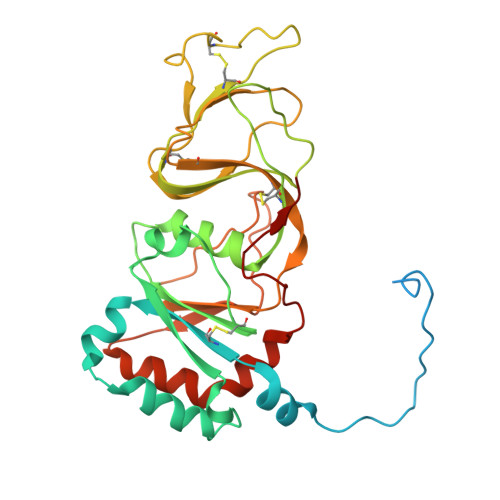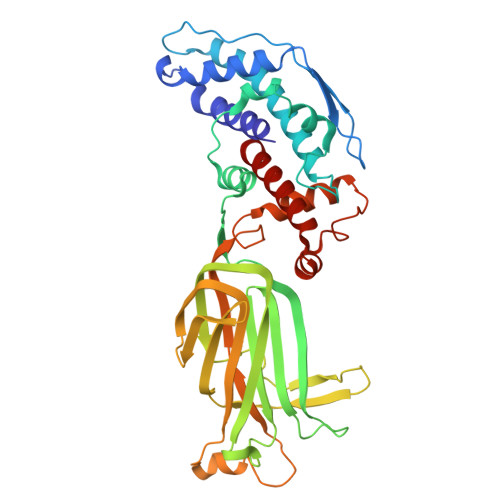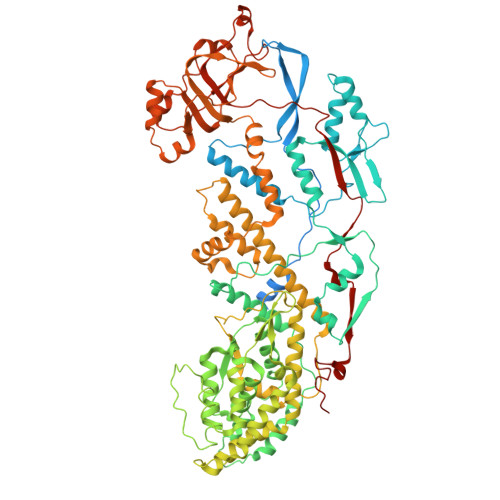Structural determinants of rotavirus proteolytic activation.
Asensio-Cob, D., Mata, C.P., Gomez-Blanco, J., Vargas, J., Rodriguez, J.M., Luque, D.(2025) PLoS Pathog 21: e1013063-e1013063
- PubMed: 40794814
- DOI: https://doi.org/10.1371/journal.ppat.1013063
- Primary Citation of Related Structures:
8OLB, 8OLC, 8OLE, 8QTZ - PubMed Abstract:
The infectivity of rotavirus (RV), the leading cause of childhood diarrhea, hinges on the activation of viral particles through the proteolysis of the spike protein by trypsin-like proteases in the host intestinal lumen. In order to determine the structural basis of trypsin activation, we have used cryogenic electron microscopy (cryo-EM) and advanced image processing methods to compare uncleaved and cleaved RV particles. We find that the conformation of the non-proteolyzed spike is constrained by the position of loops that surround its structure, linking the lectin domains of the spike head to its body. The proteolysis of these loops removes this structural constraint, thereby enabling the spike to undergo the necessary conformational changes required for cell membrane penetration. Thus, these loops function as regulatory elements to ensure that the spike protein is activated precisely when and where it is needed to facilitate a successful infection.
- Department of Molecular Medicine, Peter Gilgan Centre for Research and Learning, The Hospital for Sick Children, Toronto, Ontario, Canada.
Organizational Affiliation:





















